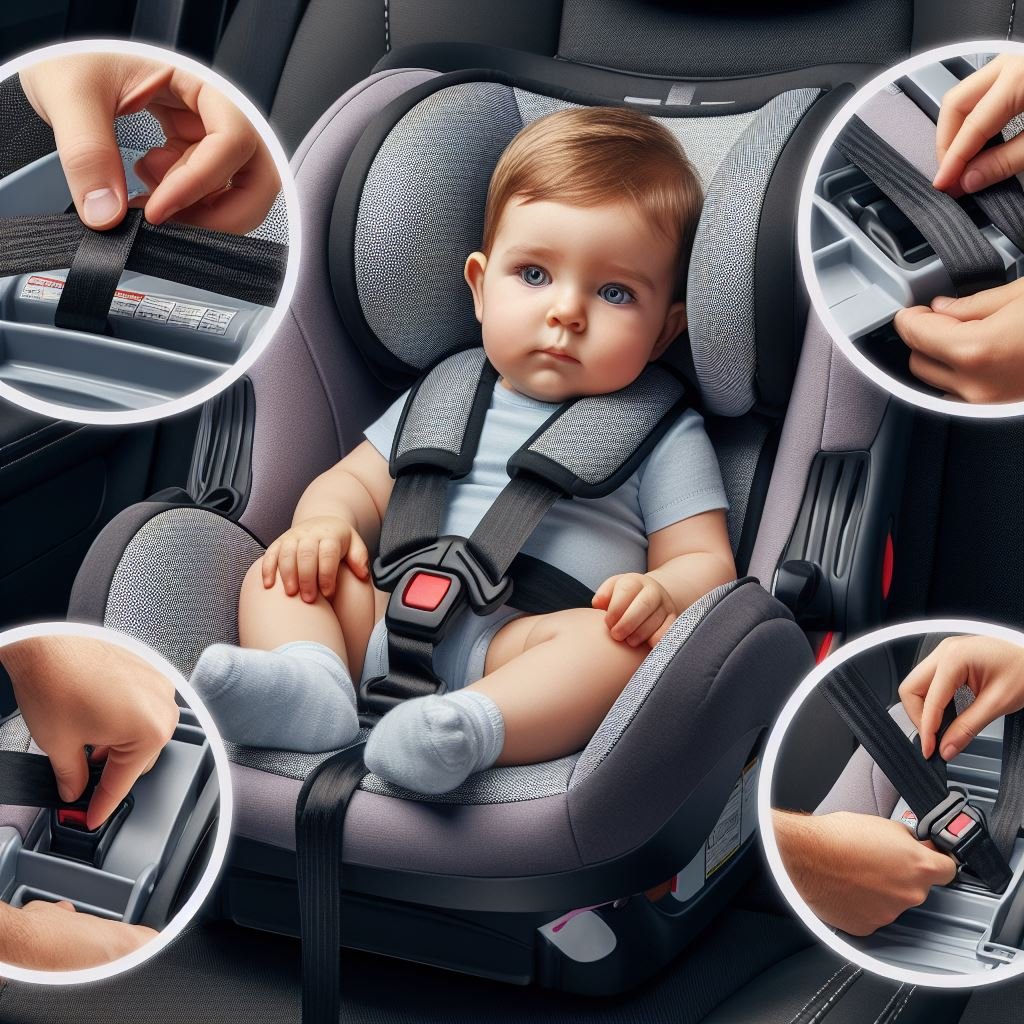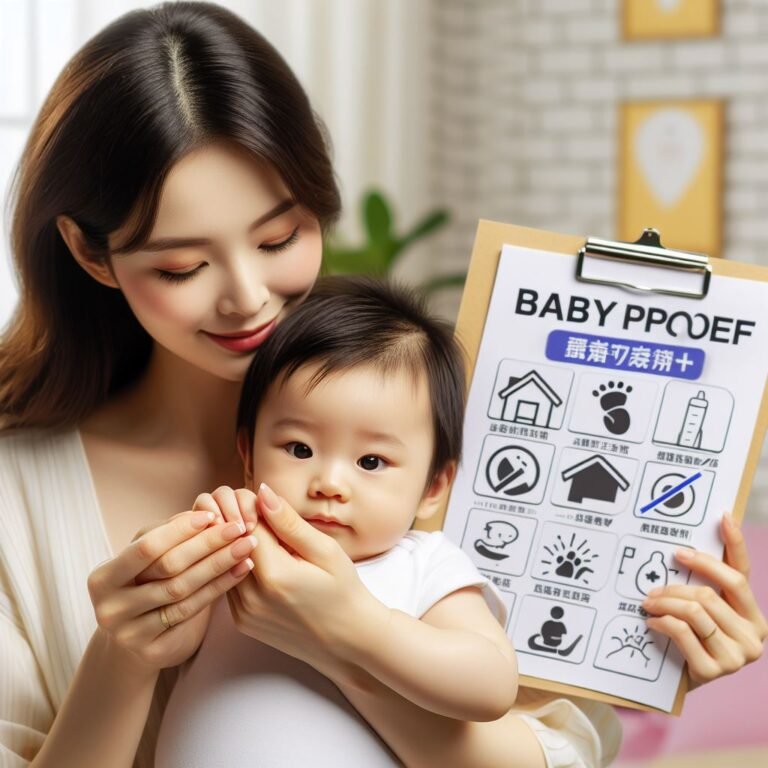How to Use Safety First Infant Car Seat for Newborn ?
In the journey of parenthood, safeguarding the precious lives of our little ones is paramount. The Safety First Infant Car Seat stands as a symbol of protection, ensuring the utmost safety and comfort for newborns.
This article serves as a guide, offering professional insights on how to properly utilize this essential tool. By adhering to its installation and maintenance guidelines, as well as understanding its safety features, parents can confidently embark on their adventures, knowing their bundle of joy is secure.
Key Takeaways
- Read the car seat instruction manual thoroughly
- Familiarize yourself with the different components and how they work together
- Adjust the harness for a secure fit, ensuring the straps pass through the appropriate slots
- Understand the safety features of the car seat, including the five-point harness system and side-impact protection with energy-absorbing foam
Installing the Safety First Infant Car Seat
To ensure the utmost safety and security for your newborn, it is crucial to properly install the Safety First Infant Car Seat. Installing the car seat correctly is essential to protecting your baby in the event of an accident or sudden stop. Here are some important steps to follow when installing the Safety First Infant Car Seat.
- First, make sure you read the car seat instruction manual thoroughly. Familiarize yourself with the different components of the car seat and understand how they work together to secure your baby.
- Next, locate the LATCH system in your vehicle. The LATCH system stands for Lower Anchors and Tethers for Children and is designed to make car seat installation easier and more secure. Attach the LATCH connectors on the car seat to the corresponding anchors in your vehicle, ensuring a tight and secure connection.
- If your vehicle does not have the LATCH system, you can install the car seat using the vehicle’s seat belt. Thread the seat belt through the designated belt path on the car seat and buckle it securely. Pull the seat belt tight to remove any slack, ensuring a snug fit.
- Finally, check the car seat for proper installation by giving it a firm tug. It should not move more than an inch in any direction.
Adjusting the Harness for a Secure Fit
Ensure that the harness is properly adjusted and securely fastened to provide a safe and comfortable fit for your newborn in the Safety First Infant Car Seat. The harness plays a crucial role in keeping your baby secure during car rides, so it is important to take the time to adjust it correctly.
Start by placing your baby in the car seat and making sure they are positioned properly. The harness should be snug but not too tight, allowing for easy movement of the limbs. Adjust the shoulder straps to the appropriate height, ensuring they pass through the slots at or below your baby’s shoulders.
To adjust the harness, locate the harness adjuster strap on the back of the car seat. Pull the strap to tighten the harness, making sure there is no slack. You should not be able to pinch any excess fabric between your fingers. Double-check that the chest clip is positioned at armpit level, and fasten it securely.
It is essential to check the harness regularly to ensure it remains properly adjusted as your baby grows.
Understanding the Safety Features of the Car Seat
While using the Safety First Infant Car Seat for newborns, it is essential to have a thorough understanding of its safety features. These features are designed to provide optimal protection and ensure the well-being of your precious little one during car rides.
One important safety feature is the five-point harness system. This system consists of straps that secure your baby at five different points—over the shoulders, across the chest, and around the hips—to keep them snug and secure in the car seat. The straps can be easily adjusted to accommodate your baby’s growth and ensure a proper fit.
Another crucial safety feature is side-impact protection. The car seat is equipped with energy-absorbing foam and deep side wings that provide additional protection in the event of a collision from the side.
It is important to make sure that the car seat is installed correctly in your vehicle to maximize its safety features. The car seat should be securely fastened using the seatbelt or the LATCH system, and the base should be level with no more than one inch of movement in any direction.
Cleaning and Maintaining the Car Seat
Properly cleaning and maintaining the car seat is crucial for ensuring its longevity and optimal functionality.
Regular cleaning not only keeps the car seat looking fresh and inviting but also removes dirt, dust, and allergens that can compromise the safety and comfort of your newborn.
To clean the car seat, start by referring to the manufacturer’s instructions for specific cleaning guidelines. Typically, the seat cover can be removed and machine washed using a gentle cycle and mild detergent. Make sure to air-dry the cover before reattaching it to the car seat.
For the plastic parts of the car seat, wipe them down with a damp cloth and mild soap. Avoid using harsh chemicals or abrasive cleaners that can damage the materials.
Additionally, it is important to regularly inspect the car seat for any signs of wear and tear, such as loose straps or broken buckles. If any issues are found, contact the manufacturer for guidance on repairs or replacement parts.
Tips for Using the Safety First Infant Car Seat for Newborns
When using the Safety First Infant Car Seat for newborns, it is important to acquaint yourself with the proper installation techniques. Ensuring that the car seat is installed correctly is crucial for the safety and well-being of your baby.
To help you make the most of your Safety First Infant Car Seat, here are some tips to keep in mind:
- Read the instruction manual: Familiarize yourself with the car seat’s instruction manual. It will provide you with detailed information on how to properly install and use the seat, as well as important safety guidelines.
- Adjust the harness straps: Make sure the harness straps are snug and secure, but not too tight. The straps should be at or below your baby’s shoulders when rear-facing, and at or above the shoulders when forward-facing.
- Position the seat correctly: Install the car seat in the back seat of your vehicle, preferably in the center position. This will provide the best protection in the event of a collision.
- Regularly inspect the car seat: Check the car seat regularly for any signs of wear and tear. Make sure all the components are in good working condition and that there are no loose or missing parts.
By following these tips, you can ensure that your Safety First Infant Car Seat is installed and used correctly, providing maximum safety and comfort for your newborn.
Frequently Asked Questions
Can I Use the Safety First Infant Car Seat for My Premature Baby?
Yes, the Safety First Infant Car Seat can be used for premature babies. However, it is important to consult with a healthcare professional or the car seat manufacturer to ensure proper installation and fit for the baby’s specific needs.
How Long Can My Newborn Stay in the Safety First Infant Car Seat?
The safety and well-being of a newborn should be the primary concern. It is important to understand the recommended duration for a newborn to stay in the Safety First infant car seat to ensure their safety and comfort.
Is It Safe to Use the Car Seat if My Baby Falls Asleep in It?
It is crucial to prioritize safety when using a car seat for a newborn. When considering if it is safe for a baby to fall asleep in the car seat, it is important to follow the manufacturer’s guidelines and ensure proper positioning and support for the baby’s head and neck.
Can I Use the Car Seat Without the Base?
Yes, you can use the Safety First Infant Car Seat without the base. It is designed to be used both with and without the base, providing flexibility and convenience for parents on the go.
How Do I Know if the Car Seat Is Installed Correctly?
To ensure the correct installation of a car seat, it is important to follow the manufacturer’s instructions and use the appropriate installation method, whether it requires a base or not. Proper installation is crucial for the safety of the newborn.
Conclusion
In conclusion, the Safety First Infant Car Seat is a crucial tool for ensuring the safety and comfort of newborns during car travel.
By following the proper installation and adjustment techniques, understanding the safety features, and maintaining the car seat, parents can provide a secure environment for their infants.
It is important to note that car crashes are the leading cause of death for children in the United States, emphasizing the significance of using a reliable and well-maintained car seat.






